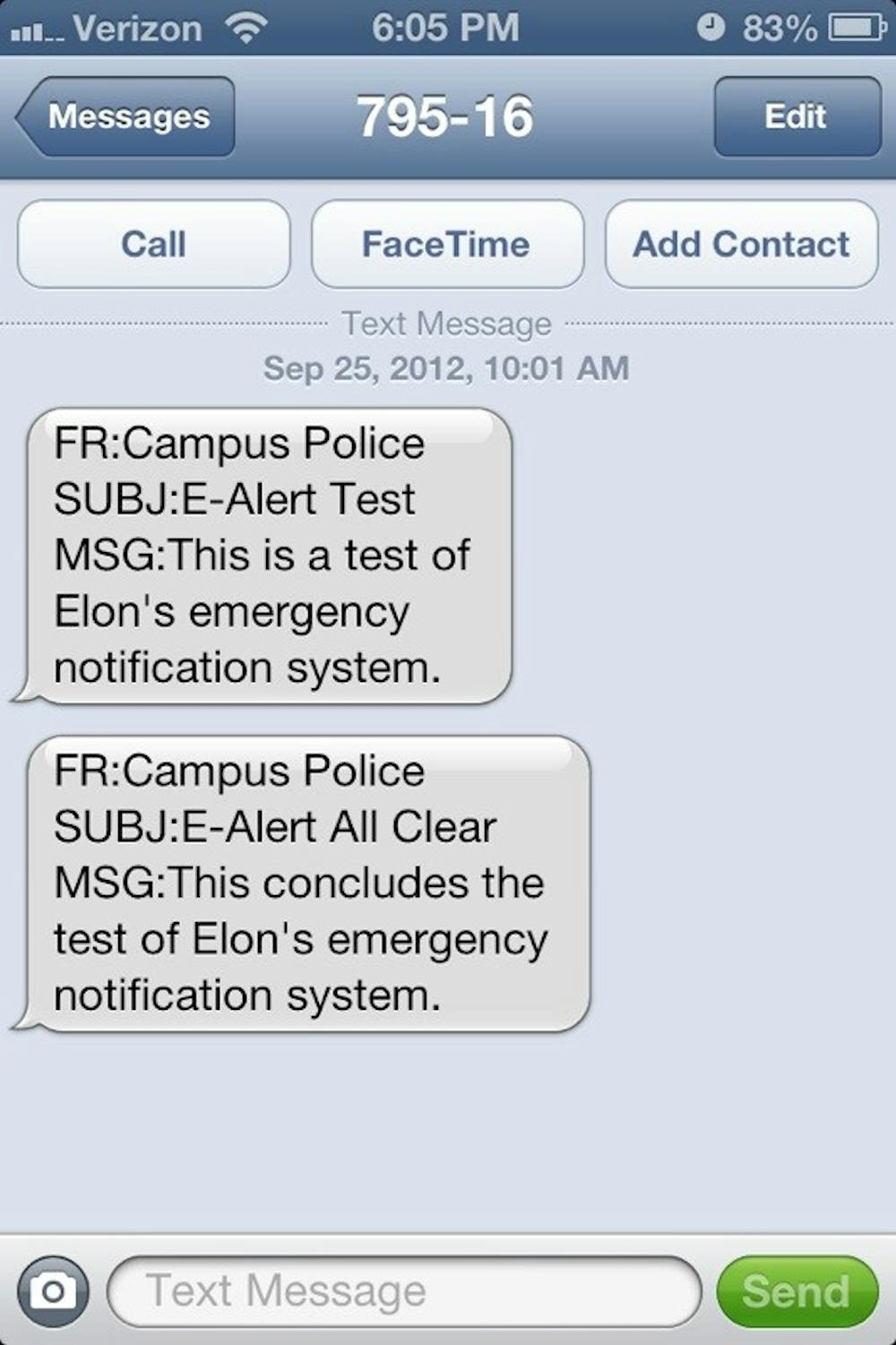From one-third of staff succumbing to bird flu to an active shooter on campus, Elon University has a plan to address emergency situations of all kinds.
Although Elon has not adopted social media into its emergency plan, Chris Fulkerson, Elon’s chief information officer, is still confident in the university’s system.
According to a recent USA Today article, many schools are implementing social media – mainly Twitter and Facebook – into their emergency response plans. Elon is not one of them.
“That’s a debate that’s happening right now,” Fulkerson said. “But say the servers crashed. Do you really want that out on social media? You have to be very careful of what you put out there.”
Half a decade after the Virginia Tech shooting, colleges throughout the country remain vigilant. The massacre prompted widespread reviews of emergency response plans in schools throughout the country.
According to Fulkerson, the university undergoes an intensive review of its emergency response plan every other year. Everything from train wrecks to hurricanes are used hypothetically to gauge the effectiveness of the system.
In order to test the system, a scenario will be presented, and the entire emergency response plan must then be carried out, testing each person’s role individually and as part of a larger whole.
“We catch a lot of things that we didn’t think about, that we need to refine,” Fulkerson said.
Elon’s emergency response system hasn’t been activated since May 25, 2000, when 80 mph winds swept through campus. But the university has remained vigilant in the meantime, on the lookout for the next disaster on the horizon.
According to Fulkerson, the plan must constantly be refined to keep up with the changing pace of technology. In addition to the biennial review, the system is tested twice each year. At College Coffee in the spring and fall, the alert system is activated and then evaluated.
“Every year, we look at it and try to make it more sophisticated and easier to operate,” Fulkerson said. “We’re always looking to improve.”
The university prefers to alert people through channels under its direct control. In the event of an emergency, a message can travel throughout campus in a matter of seconds. Two outdoor sirens, located atop Alumni and East Gym, are capable of transmitting a prerecorded or live message, according to Dennis Franks, director of campus safety and police.
Robert Buchholz, director of Physical Plant, emphasized the importance of Elon’s E-Alert system, which emails and texts registered faculty, staff and students. All of the phones at Elon are IP-based, meaning they all become speakers in the event of an emergency. Television and computer screens on campus can simultaneously broadcast a warning.
“We can get the message out all over campus in a manner of seconds,” Fulkerson said.
Speed is important, Franks said, particularly when an emergency requires assistance from outside the university. Campus police maintain close ties with the Town of Elon Police. In addition, the university police work with other law enforcement agencies in Alamance County when necessary.
“We have mutual aid agreements with each other,” Franks said. “Both police departments use the same radio frequency and dispatch center so the information flow is immediate to both agencies.”
The plan’s emphasis on instantaneous access to information may seem to lend itself to social media, but Fulkerson said he believes controlling the message is more important.
“Rumors run rampant on college campuses,” he said. “A lot of times the rumors are proved false in the long run, but reporting it at the beginning only fuels the panic. You’ve got to be careful of what you announce where.”


